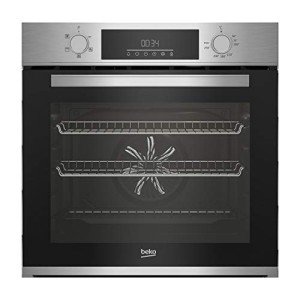The Comprehensive Guide to Single Built-In Ovens: Features, Benefits, and FAQs
Intro
In contemporary kitchen areas, the combination of appliances is key to accomplishing a structured design. Among these home appliances, the built-in oven stands out as a staple for daily cooking. In particular, single built-in ovens are getting appeal due to their space-saving design and efficiency. This post checks out the features, benefits, and typically asked concerns about single built-in ovens, assisting house owners make informed choices.
What is a Single Built-In Oven?
A single built-in oven is a cooking home appliance created to be embedded within kitchen cabinetry, offering a seamless look that matches the kitchen's aesthetic. Unlike freestanding ovens, built-in variations provide a range of features and styles that deal with modern culinary needs.
Key Features of a Single Built-In Oven
Single built-in ovens come with a range of functions that enhance performance and user experience. Here are some of the most crucial attributes:
| Feature | Description |
|---|---|
| Size and Capacity | Normally ranges from 24 to 30 inches in width; suitable for numerous kitchen sizes. |
| Cooking Modes | Numerous settings, including convection, baking, broiling, and in some cases steam cooking. |
| Controls | Digital touch controls or traditional knobs with accurate temperature level settings. |
| Self-Cleaning Options | Many designs consist of self-cleaning functions for much easier maintenance. |
| Energy Efficiency | Developed to consume less energy, often with an A+ energy ranking. |
| Security Features | Includes child locks, cooling systems, and temperature level sensors. |
| Design Options | Available in numerous finishes (stainless steel, black, etc) and styles (modern, classic). |
Benefits of Using a Single Built-In Oven
The adoption of single built-in ovens uses various advantages:
- Aesthetics: They create a contemporary and refined look in the kitchen, blending effortlessly with cabinetry.
- Space-Saving: Ideal for smaller cooking areas, they are created to optimize area by being built into walls or cabinets.
- Increased Functionality: Many models come with sophisticated cooking technology such as smart functions that permit remote control via smartphone.
- Easy to Use: With intuitive controls, built-in ovens are user-friendly and ideal for both novice and knowledgeable cooks.
- Improved Cooking Performance: Convection designs circulate hot air for even cooking outcomes.
Popular Brands and Models
A number of brands dominate the single built-in oven market, each offering distinct functions to accommodate customer preferences. Here are some noteworthy ones:
| Brand | Popular Models | Key Features |
|---|---|---|
| Bosch | HBN8451UC, HBL8453UC | European style, convection heat, Wi-Fi connectivity. |
| Electrolux | E30SO75GPS, E30SO75PPS | Variations in size, advanced barbecuing abilities. |
| Samsung | NV51K6650SG | Double convection, clever technology, versatile cooking modes. |
| Whirlpool | WOS51EC0HS | Economical, dependable, self-cleaning features. |
| LG | LWS3063ST | Smart innovation, air fry mode, smooth aesthetics. |
Installation Considerations
Setting up a single built-in oven involves specific considerations:
- Measurement: Ensure that the area set aside works with the oven's dimensions.
- Ventilation: Adequate air flow must be maintained for security and efficiency.
- Electrical Needs: Check voltage requirements and make sure proper electrical outlets are readily available.
- Expert Installation: While some property owners may choose DIY, employing a professional can alleviate installation problems.
Frequently Asked Questions (FAQs)
How much space is required for a built-in oven?
- A built-in oven generally requires a designated space that differs by design, usually from 24 to 30 inches in width. Constantly refer to the producer's specs for precise measurements.
Can I set up a built-in oven by myself?
- While some may attempt a DIY setup, it is frequently suggested to hire an expert to guarantee appropriate fitting, electrical connections, and ventilation.
Are single built-in ovens more pricey than freestanding designs?
- Normally, yes. Single built-in ovens tend to cost more due to their style, installation, and extra functions.
What are the distinctions in between convection and routine ovens?
- Stove have a fan that circulates hot air throughout, resulting in even cooking. mouse click the up coming website page on convected heat, which may cause hot spots and unequal cooking.
What upkeep is needed for a built-in oven?
- Regular cleaning, making sure vents stay unblocked, and monitoring functions. Lots of models use self-cleaning options, which streamline upkeep.
Single built-in ovens represent a convergence of design, benefit, and performance in contemporary kitchens. With a myriad of functions and models offered, these ovens accommodate different cooking requirements and preferences. Whether you are an aspiring chef or an occasional home cook, purchasing an appropriate single built-in oven can boost your cooking experience while raising your kitchen's visual. Cautious factor to consider of features, installation requirements, and maintenance will cause a satisfying investment in this necessary kitchen appliance.

